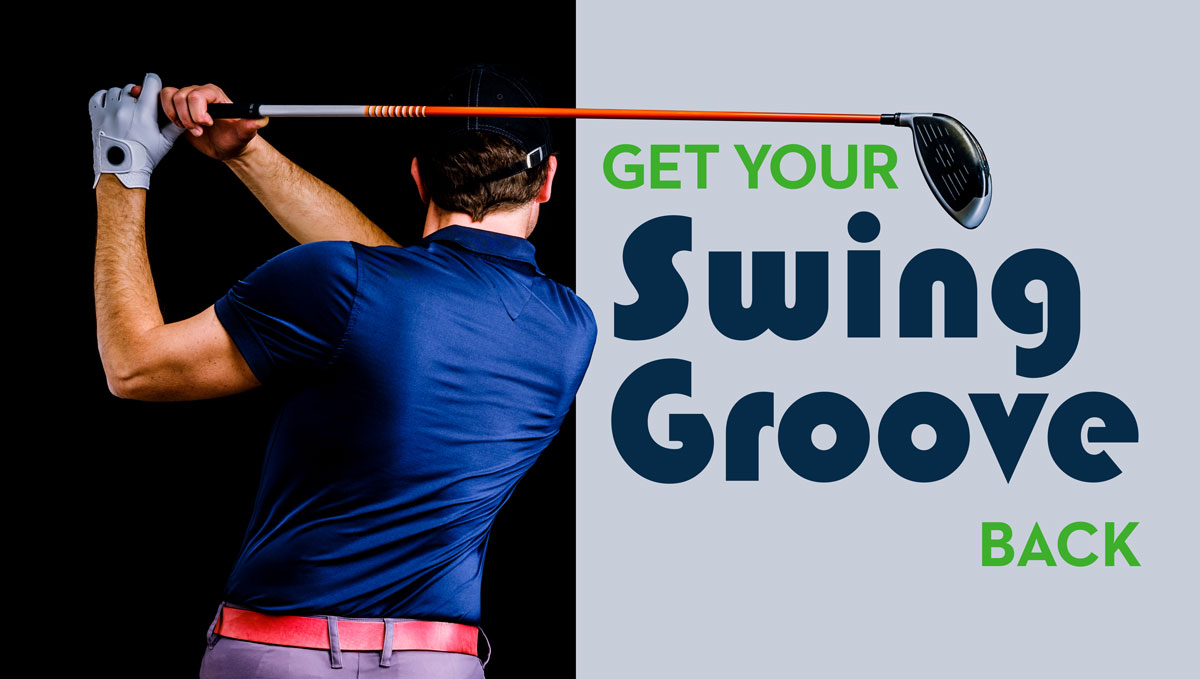Enhance your ability to move and feel your swing
By Neil E. Wolkodoff, PhD
In golf, the swing is the thing. As you transition from Eskimo mode to being one with the turf, how do you make the most of your swings in the early season, indoors or on the range?
There is an overlooked factor in human movement that, with a little bit of attention, will allow you maximum impact from early season ramp-ups. Kinesthetic Sense is the ability to feel your body in space and time. Some of the body’s sensors measure the muscle’s total length and stretch rate, while some measure tension and joint position. Whether you direct your swing, take lessons, or use personal video monitoring, an enhanced sense of movement will improve a deficit swing to help groove an already good motion. If you are trying to improve a motion, comparing the feeling of the incorrect with the correct movement is valuable.
The golf swing uses movement in all three planes or directions of motion forward/back (sagittal plane), side to side (front plane), and rotation (transverse plane). Your off-season exercise has had you move forward and back primarily in the sagittal plane. That is fine for essential fitness, burning calories, and building strength. However, that type of movement does not translate directly from the gym to golf practice. In the early season, you might feel out of sync with your movement ability and feeling/directing movements.
Most amateurs’ average golf swing from the start back through impact is from 1.1 to 1.5 seconds. Quite a bit of information and control are needed to direct the motion in such a short time frame. And with speed changes and how the various parts of the body are used. Here are four simple ways to improve your movement potential and body awareness.
START WITH THE FEET. How you anchor with the ground will influence how you move. Get a rocker balance board, and at least twice per week, if not more, practice various rocker board exercises. Moving on the rocker board is more critical than staying balanced. Place the feet in different forward/back and side-to-side positions, and rock the board from edge to edge in a controlled manner. Over a few weeks, you will better understand everything from ground anchoring to weight shifts.
CALISTHENIC UP. A simple way to gain both motion and awareness is old-time calisthenics. If you need a model, find the Physical Training routines used by soldiers in WW2. Start slower than you might see in the photos, as they averaged 21 years of age, and you are probably starting at twice that age. The exercises self-pace in difficulty because as you gain motion and awareness, you will likely go faster and farther in each movement. If it is likely, routines you find will have a good dispersion of shoulder, core, and leg exercises. These are also very good warmups for golf with some adaptation based upon your physical ability. Football players in the 50s and 60s used similar progressions to warmup before practice. Five minutes before each activity or golf session is an excellent start. And markedly better than a static stretching routine before a golf session.
FITTER ON THE BALL. In golf, everything connects through the core and hips. Benefit per rep, nothing beats core exercises performed on a FitBall. You can easily change balance points and benefits by adjusting your foot position and how your upper body rests on the ball. An exercise like diagonal crunches can be performed with a wide stance for stability, then narrow the stance for added awareness, challenge, and balance.
Neil E. Wolkodoff, PhD, performs research on golf and sports, and provides programs to improve human performance and health. He has worked successfully with PGA, collegiate and junior golfers over the last 25 years. Neil is the Medical Program Director for the Colorado Center for Health & Sports Science.










